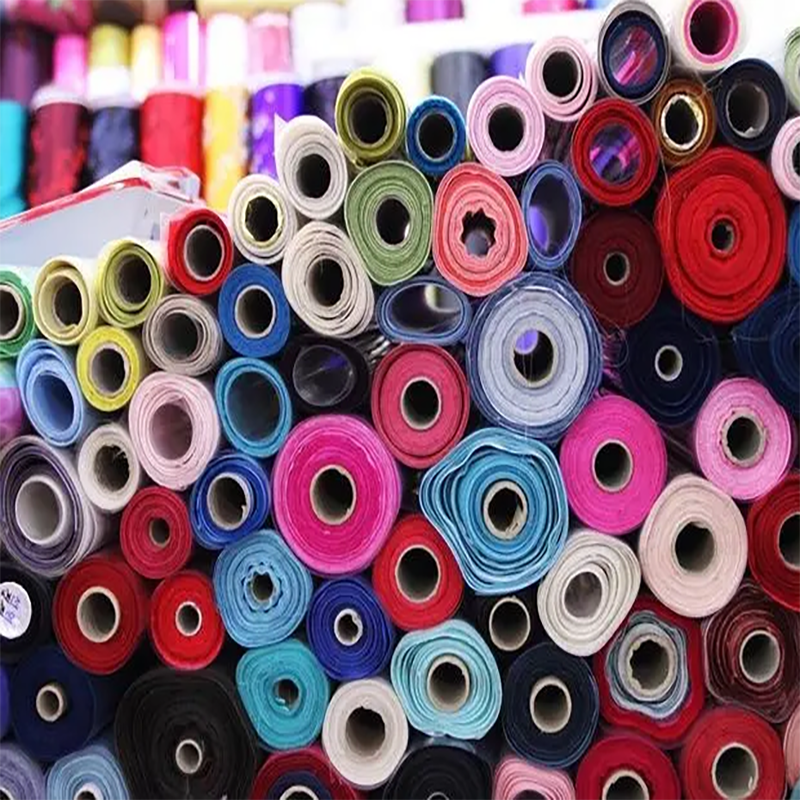Silk is a luxurious natural fiber known for its smooth, lustrous, and versatile qualities. There are several different types of silk fabric, each with its unique characteristics, texture, and appearance.
Here are some of the most common types of silk fabric and how they vary:Mulberry Silk: Mulberry silk is the most common and widely produced type of silk. It is obtained from the Bombyx mori silkworm and is known for its fine, smooth texture, and natural sheen. Mulberry silk can be used to create various fabric types, including satin, charmeuse, and organza.
Satin: Satin is a type of silk fabric that features a smooth, shiny surface on one side and a matte back. It is made using a weaving technique that creates a high-gloss appearance. Satin is often used for evening gowns, lingerie, and accessories due to its luxurious feel.
Charmeuse: Charmeuse is a lightweight, glossy silk fabric with a satin weave. It is soft and drapes beautifully, making it popular for lingerie, eveningwear, and blouses.
Crepe de Chine: Crepe de Chine is a lightweight, crinkled silk fabric that has a slightly pebbly texture. It is often used for blouses, dresses, and other lightweight garments.
Georgette: Georgette is a sheer, lightweight silk fabric with a slightly grainy texture. It drapes well and is commonly used for flowing dresses and scarves.
Chiffon: Chiffon is a sheer and lightweight silk fabric with a fine, plain weave. It has a delicate, diaphanous appearance and is commonly used for evening gowns, bridal wear, and accessories.
Taffeta: Taffeta is a crisp, smooth silk fabric with a lustrous sheen. It is often used for formal dresses, ball gowns, and bridal attire.
Organza: Organza is a sheer, lightweight silk fabric with a crisp texture. It is commonly used for bridal gowns, eveningwear, and decorative purposes.
Duppioni Silk: Duppioni silk is characterized by its irregular slubbed texture, created from two silkworms spinning their cocoons together. It has a rustic, textured appearance and is used in various applications, including suits, jackets, and home decor.
Raw Silk: Raw silk, also known as silk noil, has a nubby texture and is less shiny than other silks. It is typically a heavier silk fabric and is used for casual clothing, upholstery, and accessories.
Each type of silk fabric has its own unique texture, weight, and appearance, making it suitable for different clothing and design purposes. The choice of silk fabric depends on the desired look and feel of the final product.
How does cloth canvas fabric differ from other types of textile materials like silk?Cloth canvas fabric and silk are two distinct textile materials that differ in several aspects, including their composition, texture, uses, and characteristics:
Composition:
Cloth Canvas Fabric: Canvas is typically made from cotton, though it can also be produced from synthetic fibers like polyester. It is a heavy, durable, and tightly woven material.
Silk: Silk is a natural protein fiber produced by silkworms. It is known for its fine, smooth, and lustrous texture.
Texture:
Cloth Canvas Fabric: Canvas has a coarse and textured surface due to its thicker and more substantial weave. It can have a rough feel and appearance.
Silk: Silk has a smooth, soft, and lustrous texture.
China Calico Gray Cloth Canvas Fabric Washing Fabric Silk It is known for its elegant and luxurious feel.
Durability:
Cloth Canvas Fabric: Canvas is highly durable and sturdy. It is often used for heavy-duty applications such as tents, sails, and upholstery due to its strength.
Silk: Silk is delicate and less durable compared to canvas. It is more susceptible to damage from abrasion and exposure to sunlight.
Weight:
Cloth Canvas Fabric: Canvas is heavier and thicker, making it suitable for rugged and long-lasting applications.
Silk: Silk is lightweight and fine, making it ideal for lightweight clothing and delicate items.
Use Cases:
Cloth Canvas Fabric: Canvas is commonly used for various heavy-duty applications, including outdoor equipment, bags, workwear, and upholstery.
Silk: Silk is often used for high-end fashion, eveningwear, lingerie, accessories, and home textiles.
Breathability:
Cloth Canvas Fabric: Canvas is less breathable due to its tightly woven structure, which can make it suitable for certain weather-resistant applications.
Silk: Silk is highly breathable and regulates temperature well, making it comfortable to wear in a variety of conditions.
Appearance:
Cloth Canvas Fabric: Canvas has a rustic and utilitarian appearance, often used in casual or industrial settings.
Silk: Silk has an elegant and luxurious appearance, making it a popular choice for formal and high-end fashion.
Customization:
Cloth Canvas Fabric: Canvas can be dyed and printed in various colors and designs, depending on the application.
Silk: Silk can be dyed and printed to create intricate patterns and vibrant colors, adding to its appeal in fashion and decorative textiles.
In summary, canvas fabric and silk are suited for different purposes due to their contrasting characteristics and textures. Canvas is known for its strength and durability in rugged applications, while silk is favored for its elegance, softness, and luxurious feel in clothing and accessories.

